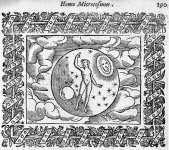Parzival
The World/ Le Monde
Actually, I saw a theatre performance of Hamlet without words, only movements and gestures. It was a great proof of the power of the word. Hamlet without his speeches was a non-Hamlet Hamlet. And yet the essence of Hamlet was there, for a week , that is. Low attendence, then no attendence, alas, it was not to be. As for Tarot, the images are an analogy to Hamlet's speeches. Meant to be directly seen/heard. But there is system behind Hamlet : philosophy, history, psychology, poetry. And each Tarot has all that behind it, more or less. The direct approach, the background approach.
Fulgour said:Well said & much appreciated! Here's the thing though:
Tarot without a system is like a flag without a country.
And for me the system with Tarot is the Tarot itself...
not Hebrew Kabbalah or Astrology~I look at the cards.
What'd Shakespeare be~if you did not read the plays?
Or if you saw them performed unspoken: a dumb-show
is what they called such things back in the Bard's day.
Actually, I saw a theatre performance of Hamlet without words, only movements and gestures. It was a great proof of the power of the word. Hamlet without his speeches was a non-Hamlet Hamlet. And yet the essence of Hamlet was there, for a week , that is. Low attendence, then no attendence, alas, it was not to be. As for Tarot, the images are an analogy to Hamlet's speeches. Meant to be directly seen/heard. But there is system behind Hamlet : philosophy, history, psychology, poetry. And each Tarot has all that behind it, more or less. The direct approach, the background approach.


